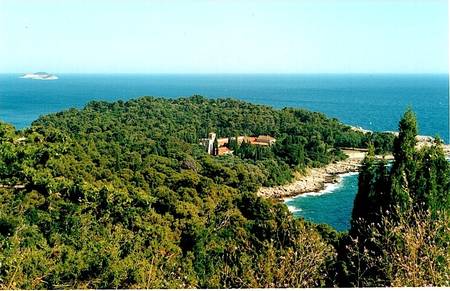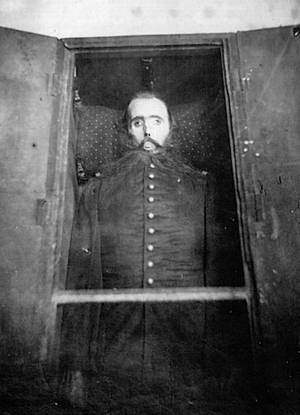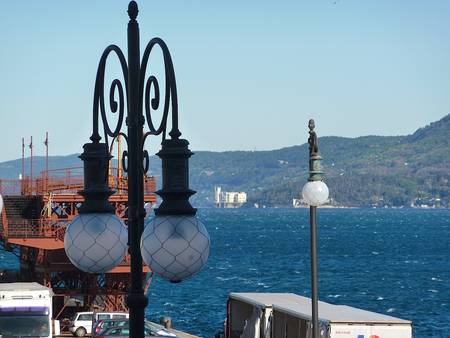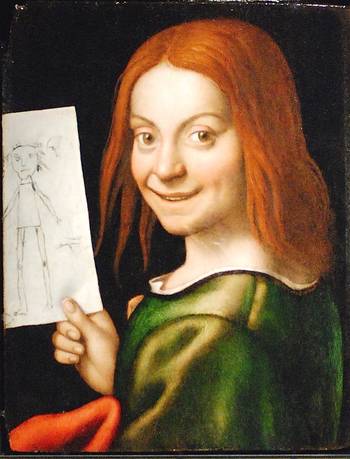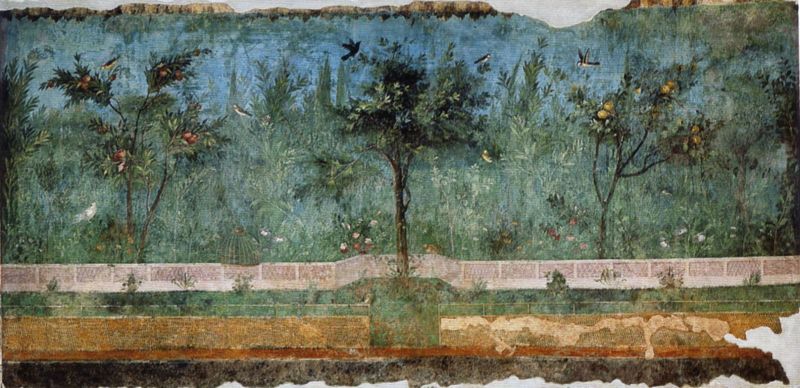Charles Freeman, ancient history consultant to the Blue Guides and author of Sites of Antiquity and Holy Bones, Holy Dust, takes a tour group to Volterra and Prato, to get away from it all.
One of the enduring pleasures of having written extensively about relic cults is recognizing obscure scenes in medieval frescoes. So who, in the frescoes depicting the Legend of the True Cross in the side chapel of San Francesco in Volterra (by Cenni di Francesco, 1410), is the figure standing before a gate in his underclothes? Well, the Byzantine emperor Heraclius (emperor 610–41), of course. Returning a fragment of the True Cross recaptured from the Persians to Jerusalem, Heraclius arrived at the city in his full imperial regalia as he assumed the occasion demanded. However, the city gate shut against him until he had showed appropriate humility by stripping off his finery. So this is why we had such a good example of medieval underwear in a fifteenth-century chapel in one of the more attractive towns of Tuscany.
Then there is the Chapel of the Girdle in Prato. This is not just any old girdle, but specifically the one that the Virgin Mary threw down to St Thomas as she was assumed into heaven. It was brought to Prato by a merchant after the crusades and in 1141 was placed in the chancel what is now the city’s cathedral. In the early fourteenth century it was wrested from the control of the clergy and placed in a new chapel in the people’s end of the church, where it still is. On its feast days it is displayed from an external pulpit built into the corner of the church overlooking the piazza.
It is the artwork connected with the Girdle that delights. The chapel has fine frescos of the Life of the Virgin (Agnolo Gaddi) and an intricately cast bronze gate (Maso di Bartolomeo). My favourite is the pulpit itself, which is the work of Donatello, with a frieze of happy dancing putti. The original is now under cover in the Museo dell’Opera del Duomo and can be explored from close-up. It is a joy to come across because the putti are so exuberant in their celebration of the relic and, as one of Donatello’s lesser known works, it comes as such a surprise. The museum also has an exquisite fifteenth-century reliquary box for the Girdle, again with dancing putti on the sides. And this is all before one has explored the wonderful frescoes of Filippo Lippi in the main chancel of the cathedral.
Prato has another sacred space, Guiliano da Sangallo’s church of Santa Maria della Carcere, built in Greek style in the late fifteenth century to celebrate an image of the Virgin Mary that a small boy had seen come alive. He claimed to have seen the Virgin climb out of the painting, put the baby Jesus on the ground, then descend into the local prison (carcere) to give it a good scrubbing. On her return she collected her baby and popped back into the picture.
On our way back to Florence, we stopped at the Villa di Castello, which was bought by the Medici at the end of the fifteenth century and once housed several of Botticelli’s greatest works, including The Birth of Venus. It is now the meeting place of the venerable Accademia della Crusca founded in 1582.Crusca means bran, and the Accademia is dedicated to winnowing out infelicities from the Italian language. In 2012 it is celebrating the four hundredth anniversary of Europe’s first dictionary that it compiled.
The villa interior is closed to the public but the garden is open and, amazingly, is free of charge. This is one of the great gardens of Europe, an inspiration for later Italian gardens but also known for its extraordinary collection of citrus fruits, over ninety different varieties. They are set out in great terracotta tubs in rows around a central sixteenth-century fountain. Here the gardeners devotedly tend the most obscure permutations of oranges and lemons, and even crosses between the two, all carefully nurtured from century to century. It is an entrancing place—and what is more extraordinary still, until a French group arrived as we were leaving, we were the only visitors.
There could be no better reasons for planning a day away from the queues of Florence.
Volterra and Prato and the Villa di Castello are covered in detail in Blue Guide Tuscany. For Florence itself, see here.







